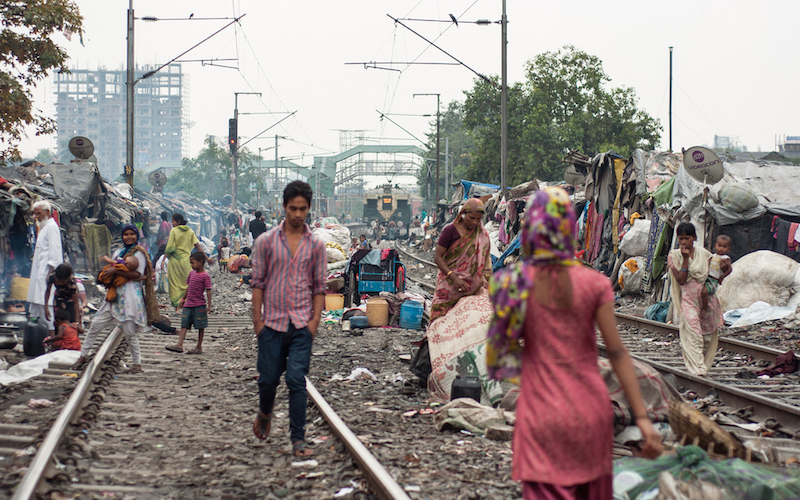
India and Climate Change: Will it be all Talk?
As we look forward to the 21st session of the UN Climate Change Conference or COP21, countries across the globe will commit to create a new international climate agreement by the conclusion of the Paris Climate Summit in December, 2015. As the third largest emitter of greenhouse gases (GHGs), after China and the United States, India faces international pressure on what’s its Intended Nationally Determined Contributions (INDCs) will be.
The Earth’s climate is changing at a fast rate, transforming many ecosystems and will continue to do so at an accelerated pace. Despite mounting evidences, we fail to decipher the complexity that is creating many inconsistencies in climate negotiations. We suffer from climate-related anticipation which can be attributed to cultural and historical logic, and not by any biological conscience. As researchers, we are focusing ever more on climate science, be it generating productive insights, potential predictions, and new ideas that can transform energy needs. While science is concerned with climate change facts, figures and numbers, the average person is not acquainted with scientific journals, nor involved with the scientific discourse regarding climate change. Furthermore, the dialogue surrounding climate negotiations is very specific and often uses jargon that is unfamiliar to the layperson.
India, like many other developing countries needs its own directive policies aimed at mitigation and adaptation.
This requires engagement from multiple stakeholders. Implementation of the existing climate policies is not adequately monitored in the country, and lacks methodological clarity required to guide policy trade-offs and priorities. The solution to these problems should not be buried in national and international documents.
The on-going revolution of climate change requires wider attention, while presenting climate change as a behavioural and political issue. This is not the case in India which makes climate negotiations a major management objective for decision-makers.
In the midst of all these complexities, India faces insurmountable challenges in the areas of growth and development of its economy, environment and energy security. With a population of more than a billion, the country faces tremendous energy needs and it is becoming increasingly difficult to meet those needs through traditional means of power generation. For India to achieve a zero emission scenario would seem like an impossible expectation, especially if the country is still trying to provide the basic necessities to sustain human life. Therefore, the primary goal of the current government still remains development. India aims for parallel development tackling the twin challenges of fighting poverty, and climate change.
28 out of 29 states in India have their own climate action plans. There has been debate about these plans for not having prioritized objectives. No evidence-based studies support many of these reports. Existing information is available through either private institutions or scientific research communities. There is also increasing consensus about pushing through reforms that would weaken India’s existing environmental laws and threaten the rights of those who rely on forests for their livelihoods. The apparent, albeit incomplete, solution would require India to achieve plans and polices that fulfill the obligations of the international conventions and promise development, while promoting local livelihoods.

Over one third of India’s rural population does not have electricity. This is compounded by the fact that energy demand is expected to double over the next 20 years. The new government says it will reduce dependency on fossil fuels and become the “renewable energy capital” of the world. Since 2011, from barely 20 megawatts, India has installed solar capacity up to 1,686 megawatts by the end of 2013. The government is planning on adding 10,000 megawatts of energy capacity to the renewable sector, every year — that’s about half of the country’s current total installed capacity. Although India is still developing domestic energy sources to satisfy the growing demand, it has imported increasing amounts of fossil fuels over the last year. With the aim of expanding its power-generation by 44%, coal imports for the country were exceptionally high in 2014 and will likely rise further over the next five years. Nevertheless, the ambitious targets for the solar and wind energy sectors have engaged many foreign renewable energy companies eagerly waiting business-friendly ventures as promised by the government.
To achieve aspirational goals, announcing foreign financing could provide leverage to the thriving renewable industry. However, major details are deeply flawed on how the government will actually improve the investments and how only renewable energy can meet India’s underlying energy needs. Therefore, the inability to generate affordable renewable energy is seen as a major limitation to India’s pursuit of reaching energy security. The existing centralized model of power generation, transmission and its distribution is becoming more costly every day, and its maintenance limits flexibility which is required to meet the continuous growing energy demands. Decentralized business models should be encouraged because they are more practical and fit into reality. India is blessed with an abundance of renewable resources like solar, wind, hydro (although this depends on the locale), biomass, biogas, and geothermal. Yet, the country spends large sums to import oil, coal, and natural gas. Having said that, India’s renewable energy targets of 100 gigawatts of solar and 175 gigawatts of total renewable sources of energy by 2022, therefore, does seem like an ambitious task.
The larger issue that India needs to accept is whether the target is achievable, and assuming if the target is not, does it make sense for India to have unrealistic goals for its climate commitment? Solar energy is widely recognized and is creating more jobs per unit of energy produced than any other energy source and the wind energy market is also escalating. However, the problem is that India is still not considered a sound capital investment. India’s high rate of stalled capital infrastructure projects has made investment difficult for the renewable sector. If climate funds do not increase and their supporting policies do not materialize, the country will be left with a number of incomplete projects and a tarnished foreign investment reputation.
The solution depends on inter-disciplinary answers. Who needs to act first? Who is responsible? Who pays for mitigation? Who pays for adaptation? And who pays for innovation? The appropriate model that would work for India requires group ownerships, access to mainstream finance and shared environmental stewardship among communities.
We, all of us, are surrounded by wasteful consumerism. We have jumped on the bandwagon that is destroying the world and is supported by a financial system that struggles to produce change. What we ultimately need is to kick-start changes by encouraging more research, development and investment in self-sustaining, scalable innovation in developed and emerging markets. India, therefore, needs to democratize its renewable energy supply. Although the Indian climate negotiations have made considerable progress in the last decade and will hopefully, be reflected in coming initiatives. But in saying so, the gap between what can be achieved and what is currently present, discloses a number of opportunities and prospects for growth and development in the country. India needs to introduce accessible, affordable, community-owned renewable energy system across the country. Giving people access to low-interest loans and incentives, promoting awareness, education and formulating practical directive policies for every individual, therefore, is the crucial step which India strongly needs to put forward in the forthcoming climate action plan.

